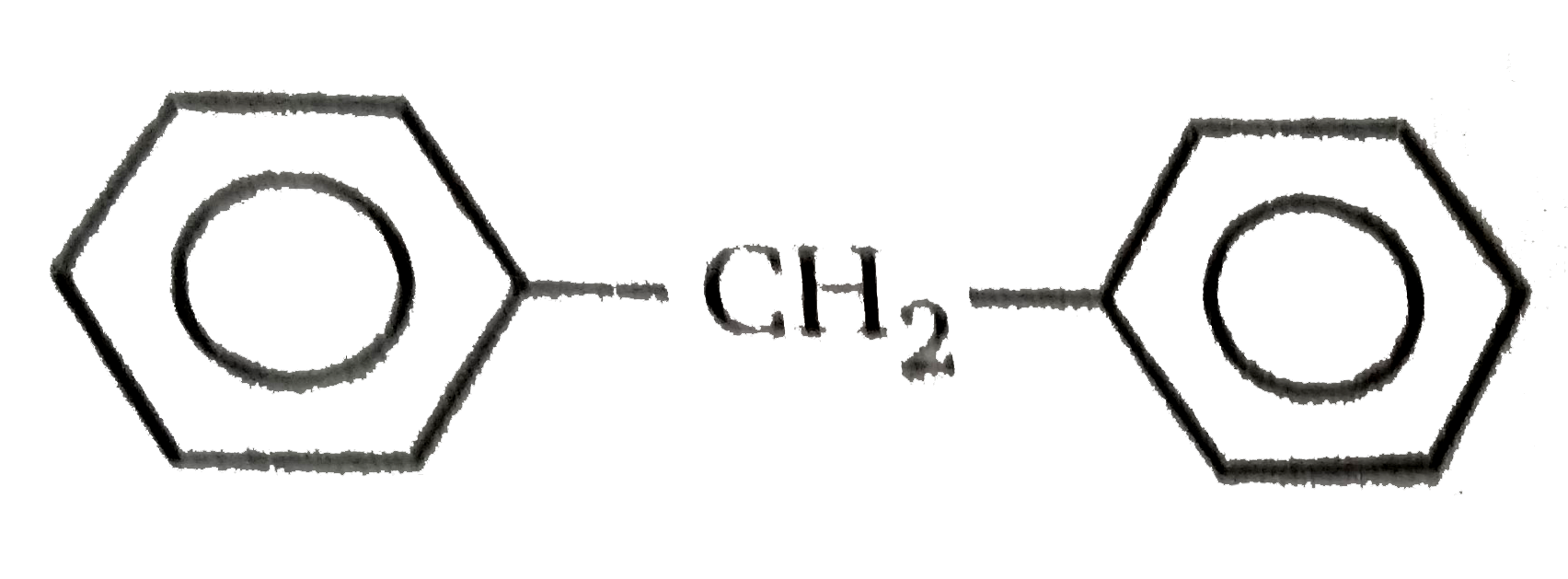Consider CHBrCIF as an example of a trisubstituted methane. How many isomers would be possible if the geometry around carbon atom were square planar?
Four
Two
Three
Only one
The correct Answer is:C

In first structure f is just opposite to H, in the second structure CI is just opposite to H and in the third structure Br is just opposite to H.
Topper's Solved these Questions
- STEREOCHEMISTRYBOOK - R SHARMACHAPTER - STEREOCHEMISTRYEXERCISE - Follow-up Test 2
1 Videos
- STEREOCHEMISTRYBOOK - R SHARMACHAPTER - STEREOCHEMISTRYEXERCISE - Follow-up Test 3
1 Videos
- STEREOCHEMISTRYBOOK - R SHARMACHAPTER - STEREOCHEMISTRYEXERCISE - Follow-up Test 1
1 Videos
- SOLUTIONSBOOK - R SHARMACHAPTER - SOLUTIONSEXERCISE - ARCHIVES
42 Videos
- SURFACE CHEMISTRYBOOK - R SHARMACHAPTER - SURFACE CHEMISTRYEXERCISE - Archives
18 Videos
Similar Questions
The molecular formula of diphenyl methane,

How many structural isomers are possible when one of the hydrogen is replaced by a chlorine atom?
View Solution
The molecular formula of diphenylmethane, How many structural isomers are possible when one of the hydrogen atoms is replaced by a chorine atom?
View Solution
Knowledge Check
Consider CH2CI2 or CH2BrCI as examples of disubstituted methanes. How many isomers would be possible in each instance if the carbon has a square planar geometry?
ATwoBThreeCOnly oneDFourHow many dibromobutanes (C4H8Br2) are possible if only structural isomers are considered?
AEightBSevenCnineDSixHow many total isomers are possible by replacing one hydrogens atoms of propane with chlorine
A2B3C4D5
How many choropentanes (C5H11Br2) are possible if only structural isomers are considered?
View SolutionThe molecular formula of diphenylmethane,

How many structural isomers are possible when one of the hydrogen is replaced by a chlorine atom ?
View SolutionGeometrical isomerism arises in heteroleptic complexes due to different possible geometrical arrangement of the ligands. Important examples of this behaviour are found with coordination number 4 and 6. Such isomerism is not possible for a tetrahedral geometry but it is possible for square planar as well as octahedral complexes. Optical square planar as well as octahedral complexes. Optical square planar as well as octahedral complexes. Optical isomers are mirror images that cannot be superimposed on one another. These are called enantiomers. Optical isomerism is common in octahedral complexes involving bedentate ligands.
Which one of the following statements is false ?
View SolutionGeometrical isomerism arises in heteroleptic complexes due to different possible geometrical arrangement of the ligands. Important examples of this behaviour are found with coordination number 4 and 6. Such isomerism is not possible for a tetrahedral geometry but it is possible for square planar as well as octahedral complexes. Optical square planar as well as octahedral complexes. Optical square planar as well as octahedral complexes. Optical isomers are mirror images that cannot be superimposed on one another. These are called enantiomers. Optical isomerism is common in octahedral complexes involving bedentate ligands.
Select the correct statement.
View SolutionGeometrical isomerism arises in heteroleptic complexes due to different possible geometrical arrangement of the ligands. Important examples of this behaviour are found with coordination number 4 and 6. Such isomerism is not possible for a tetrahedral geometry but it is possible for square planar as well as octahedral complexes. Optical square planar as well as octahedral complexes. Optical square planar as well as octahedral complexes. Optical isomers are mirror images that cannot be superimposed on one another. These are called enantiomers. Optical isomerism is common in octahedral complexes involving bedentate ligands.
Which one of the following statements is false ?
View Solution
